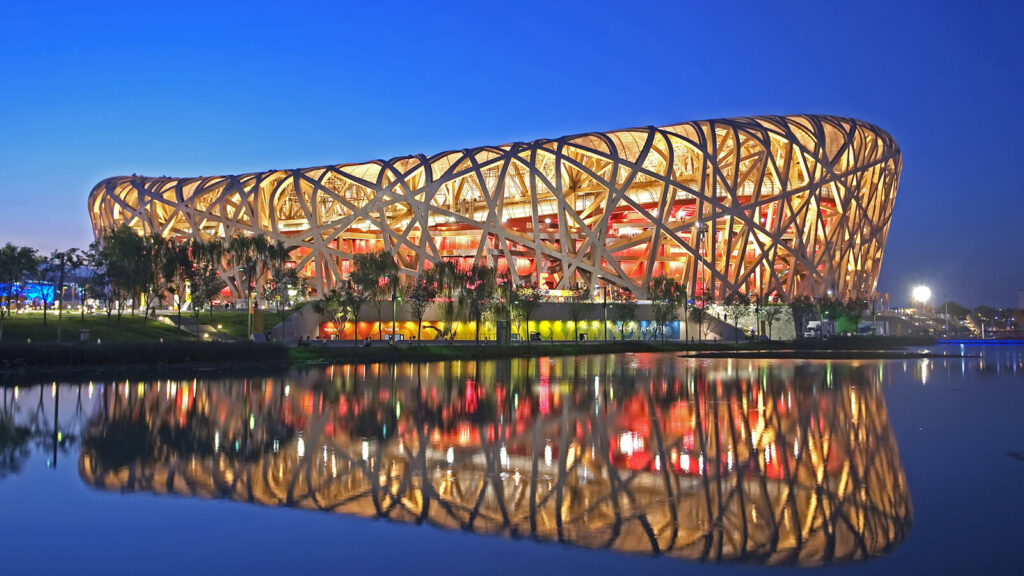Asia has some of the most iconic stadiums in the world with a rich tapestry of history, unique architecture, and passionate die-hard fans. These Stadiums contain many historic games and are symbolic cultural and economic places. This article features some of Asia’s largest architectural masterpieces, and seven great stadiums along with their significant histories, architectural names, and fan culture, as well as their importance.
Beijing National Stadium (China)
Beijing National Stadium, popularly known as the “Bird’s Nest,” lays claim to be one of the most aesthetically pleasing stadiums in the world. In Beijing, China, it was built to organize the 2008 Summer Olympics and has subsequently organized an increasing number of international sporting events. The Swiss architectural company Herzog & de Meuron designed the building as an intricately crafted steel lattice and can be touted as an architectural wonder.
It has an 80,000 capacity and serves as a location for elite football matches and cultural activities. The stadium was known around the world because of events like Usain Bolt’s running during the 2008 Beijing Olympics, where he won historic world records. It hosted the final matches of the Asian Cup, global football friendlies, and the 2015 World Championships in Athletics as well.
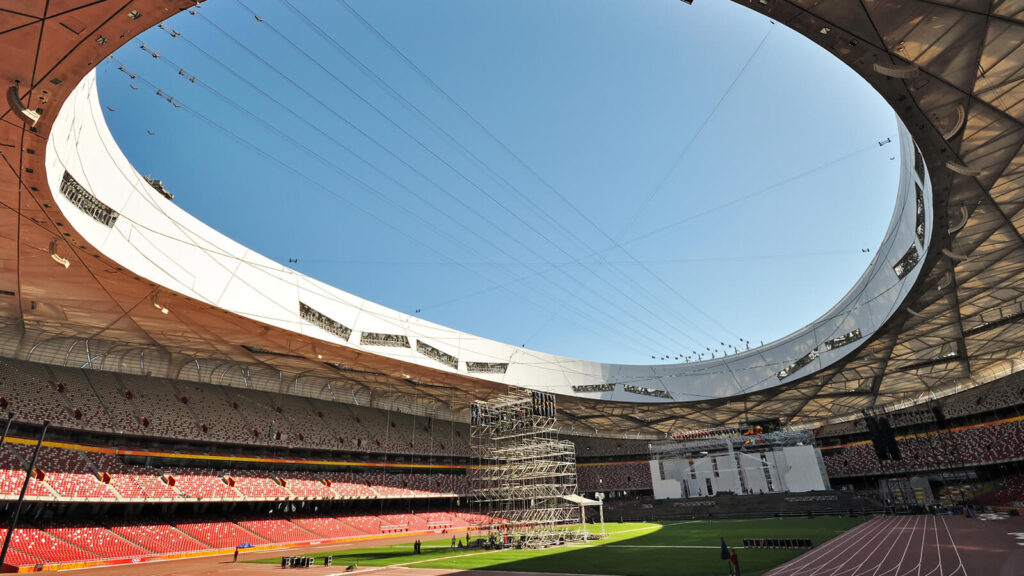
The Bird’s Nest architecture is state-of-the-art in engineering and beauty. Its web-like steel construction stands out, and its green features include rainwater harvesting and solar panels. It has a thrilling atmosphere during mega-events, China’s so-called “crooning” by fans, while the other accompanies them through traditional drums.
It boosts the capital city of Beijing for tourism as millions of holidaymakers visit annually. The expenditure also reflects China’s investment in infrastructure development and sports development. Interestingly, it cost around $423 million to build this stadium and it is one of the most photographed stadiums in the world.
Azadi Stadium (Iran)
Azadi Stadium is the largest stadium in Tehran, Iran, which symbolizes Iranian football heritage. It opened in 1973, seats 78,000, and is home to the Iranian national football team. It is part of the Azadi Sports Complex, which features several sports facilities. It is known for the massive warm welcome organized for visiting teams, with the vibrant environment making it one of the most intimidating venues to play in.
Azadi Stadium used to host the 1974 Asian Games and some finals of the AFC Champions League. It has also served as the backdrop for some of the greatest moments in Iranian football history, including the World Cup qualifying matches. The stadium is a bowl shape, which has the effect of amplifying the noise from the spectators. Other features include a synthetic running track and good-quality natural grass. Intense passionate cheering and drumming surround the Azadi Stadium, which is a common territory among a large number of Iranian fans.
Azadi stadium forms an indelible part of Iranian football culture, bringing together fans from diverse cultural backgrounds and narrating their stories of national identity. Originally, this stadium was constructed to hold 120,000 individuals, but later on, it was pruned. As a matter of safety concern, Azad had a capacity of 120,000 individuals in the first place.
King Fahd International Stadium (Saudi Arabia)
King Fahd Stadium is located near Riyadh in Saudi Arabia and is among the oldest football stadiums in the Middle East. With 68,000 seats, for which it was opened in 1987, it is home to the Saudi Arabia national team.
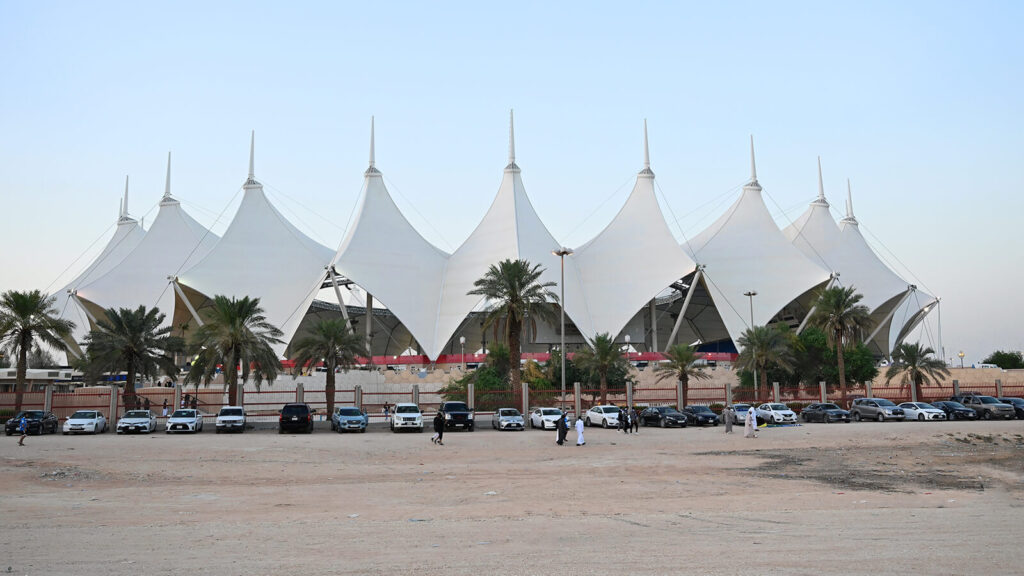
The actual stadium is very different due to the tent-like roof covering it, which distinguishes it from many other stadiums in Asia but does not deprive it of making reliable columns from international competitions. It hosted the first-ever FIFA Confederations Cup and the finals of the two competitions, the AFC Champions League, and the Gulf Cup of Nations. Most notably, it was the venue of some of the historic championships won by Saudi Arabia in the Asian Cup. The roof of the stadium remains open above the spectators but is sheltered from sun and weather by supporting 24 massive white pylons.
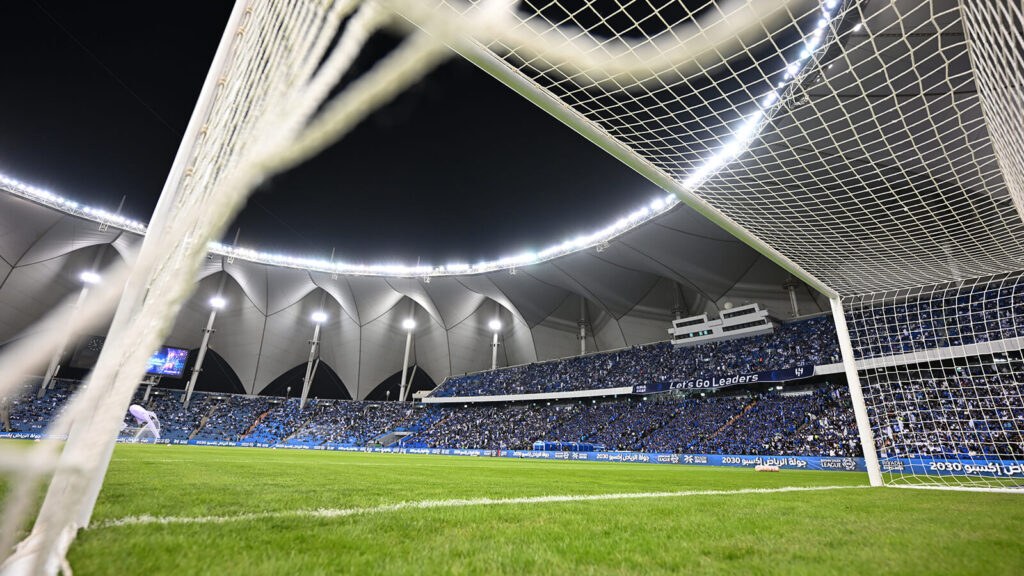
Saudi Arabian supporters are known for their cheer celebrating, and the stadium saw raucous chants and flag-waving displays. This helped in the molding of the culture of football in Saudi Arabia as that kept bringing in international tournaments for football.
Salt Lake Stadium (India)
Salt Lake Stadium, or Vivekananda Yuba Bharati Krirangan, is a magnificent stadium in India. It is based in Kolkata and was launched in 1984 with a seating capacity of 120,000, which was then reduced to 85,000 for safety measures. The stadium is regarded as the citadel of Indian football as it houses the top clubs and international-based matches. It houses Mohun Bagan, East Bengal, and the Indian national team.
It has been the venue for the final of the FIFA U-17 World Cup and several fixtures of the AFC Cup. It has been used for friendly matches by some world-renowned players, including Lionel Messi. The three-tier seating and the synthetic running track that encircles the natural grass playing area give the stadium its uniqueness. The Kolkata fans are famous for bringing along exceptional energy coupled with resounding chants and big banners to make up a daunting environment.
Salt Lake Stadium embodies the epicenter of Indian football, which has steadily cultivated an extremely strong football culture across the city of Kolkata. The stadium holds the record for attendance at 131,000 at a Kolkata derby match.
Sapporo Dome (Japan)
Sapporo Dome, famous as the world’s most advanced stadium technology-wise, is located in Sapporo, Japan. It opened in 2001 and has a maximum capacity of 41,484, while it serves as the home ground for Hokkaido Consadole Sapporo.
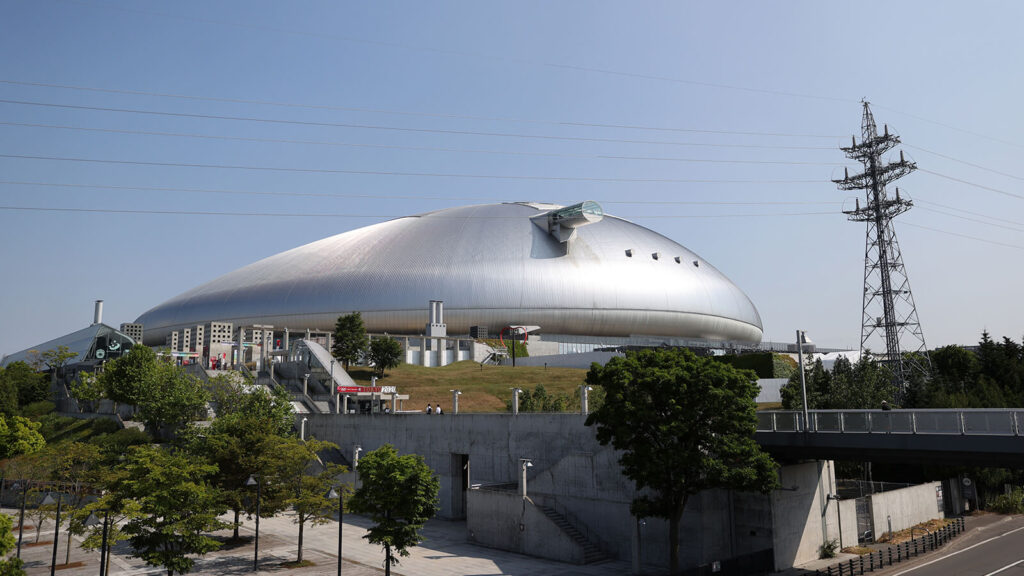
Furthermore, this technology retractable field system allows a stadium to make a highly advanced arrangement for two kinds of sports: football and baseball. It is an ideal ground for Japanese baseball and football as it was used for games of the 2002 FIFA World Cup. The stadium has an advanced sliding pitch system that alternates between an artificial turf surface. Japanese supporters are also famed for their melodious chants and dedicated support.

By this initial development, Sapporo has become one of the most important cities in Japan in the field of sports. This stadium has a retractable pitch, which takes somewhere around eight hours for changing.
Bukit Jalil National Stadium (Malaysia)
Kuala Lumpur has the pride of hosting the country’s national stadium: the largest stadium for any Southeast Asian nation. It was opened in 1998 and seated 87,411. The Malaysian national football team plays its home matches here. It is also part of the attractions at the Bukit Jalil Sports Complex. It is also one of those venues that host big events at the regional level.
It has additionally hosted the Commonwealth Games, the finals of the AFF Suzuki Cup, and giant foreign artists’ concerts. The stadium features fully covered-seating with a cutting-edge pitch drainage system. Malaysian Football falls under the “Ultras Malaya,” which could create exciting scenes with their choreographed chants. Bukit Jalil also plays a crucial role in sustaining Malaysia’s sports and tourism development. The stadium has also staged international concerts, such as Ed Sheeran and Jay Chou.
Jamsil Olympic Stadium (South Korea)
Jamsil Olympic Stadium in Seoul, South Korea, was constructed for the 1988 Summer Olympic Games. It has a seating capacity of 69,950, making it one of the primary sports arenas and venues for concerts. The stadium holds a lot of importance because of the environment that is set up here. These stadiums leave no stone in making the match viewing experience memorable and that is why it is rated as one of the best grounds in Asia.
It was the site of the Olympic games and major K-League matches. The stadium offers a traditional open seating arrangement in Olympic-style buildings within stadiums. Korean fans create quite a vibrant atmosphere with chorus chants and colorful posters. It has also become quite an important part of South Korea’s entertainment and sports industry. The stadium continues to hold K-pop concerts and international sporting events.
Conclusion
These stadiums are not just sports venues but rather cultural icons to be proud of, unifying communities, displaying architectural skills, and creating memories for sports lovers worldwide. Lastly, the above-mentioned best stadiums in Asia are worth giving a shot. Hence, you must not miss any chance to watch football games here.
